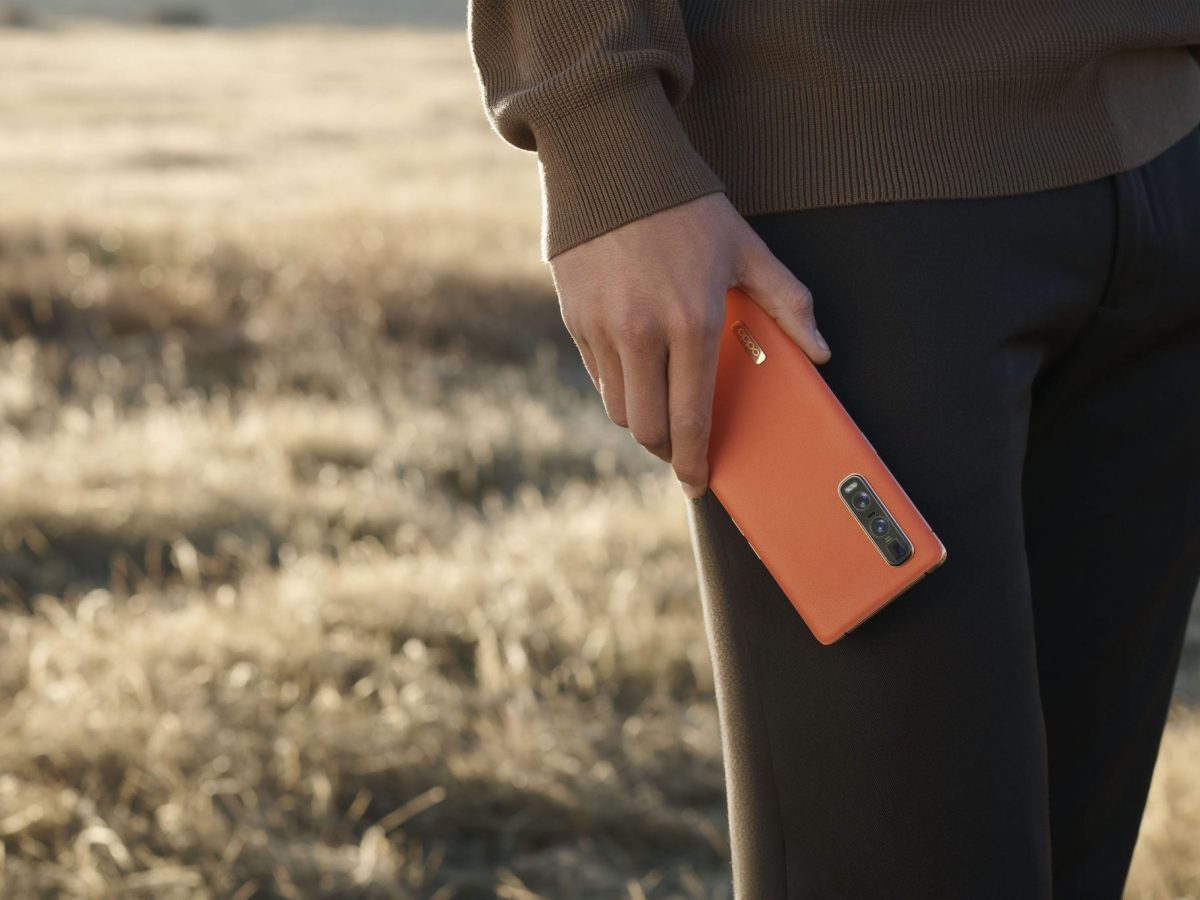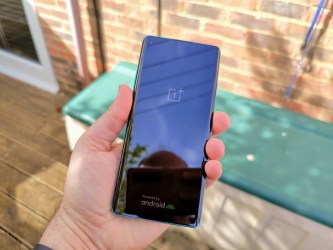
OnePlus 8 Review: The natural OnePlus 7T successor, now with 5G
Of the two new OnePlus 8 series phones announced, the model likely to be the biggest seller is the standard OnePlus 8, and here’s my review.
– I was given a device to review for a short period ahead of the launch, but OnePlus has had no previous viewing of my review or any say in its content.
What you get
Before I dive in to the review itself, I’ll start with an unboxing of the phone.
Bear in mind the outer box shown was for the press review models only, so the retail versions will not contain the OnePlus 8 book but, depending on when and how you buy the phone, you may get the cases included as extra goodies.


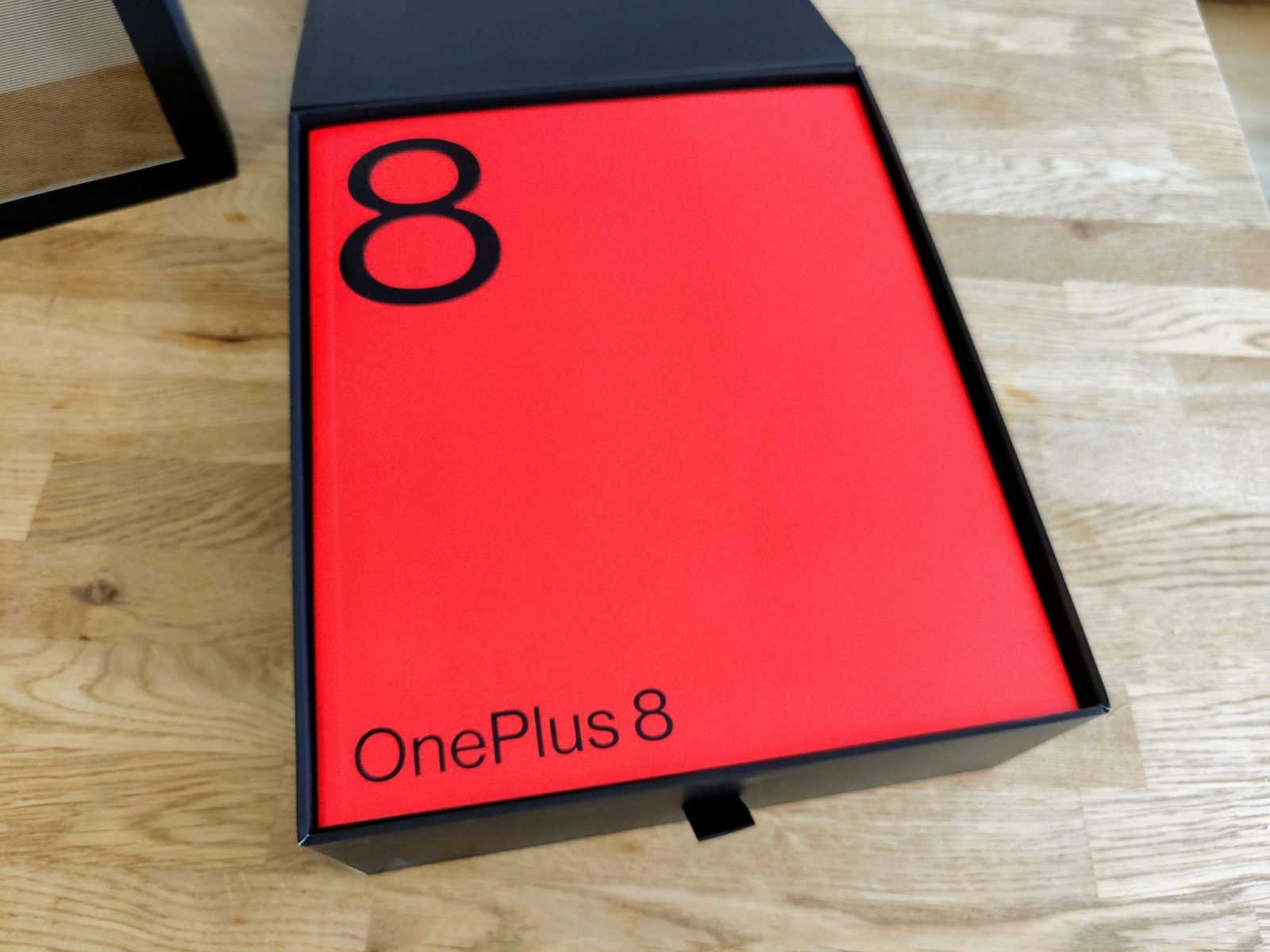
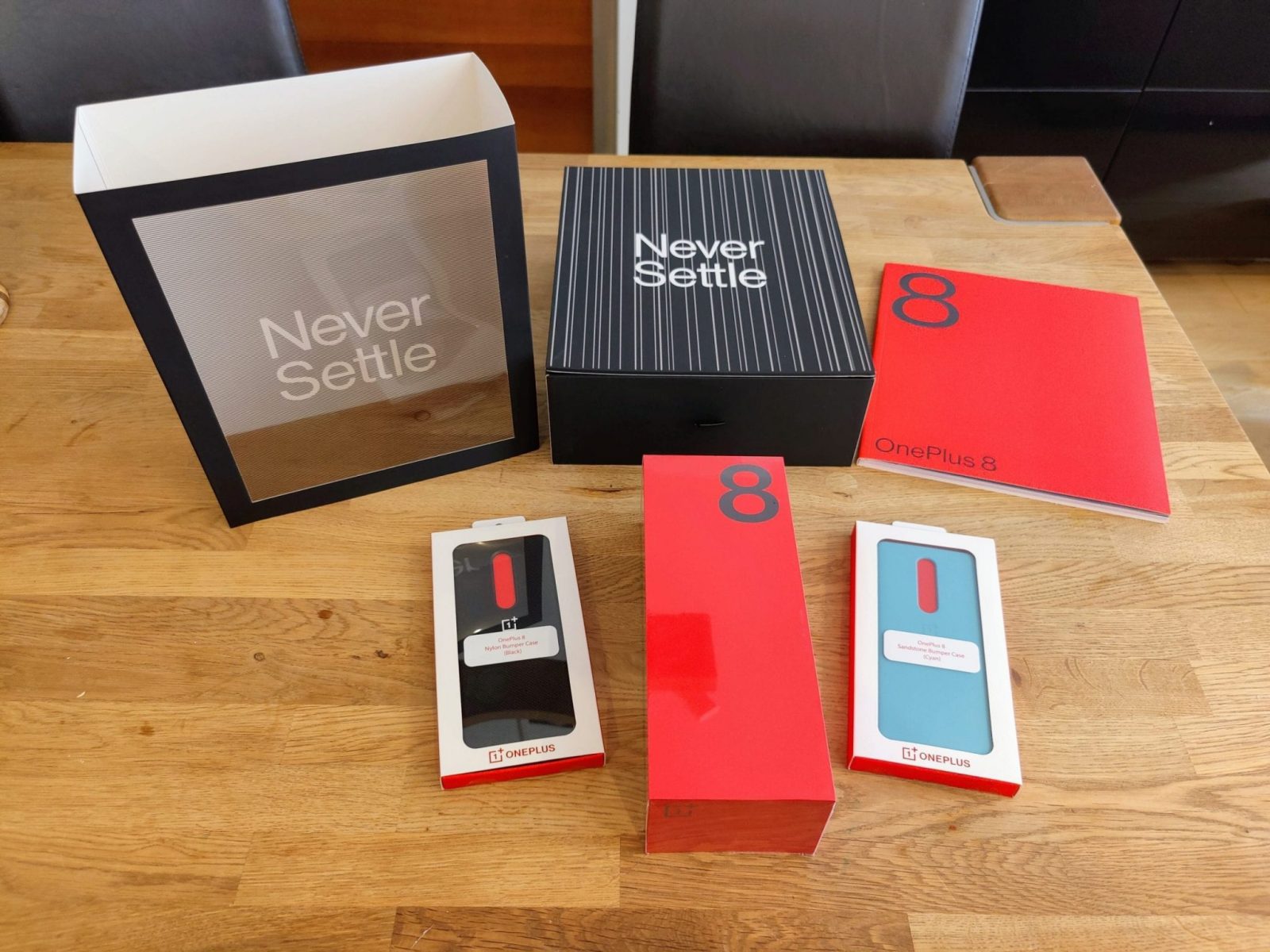
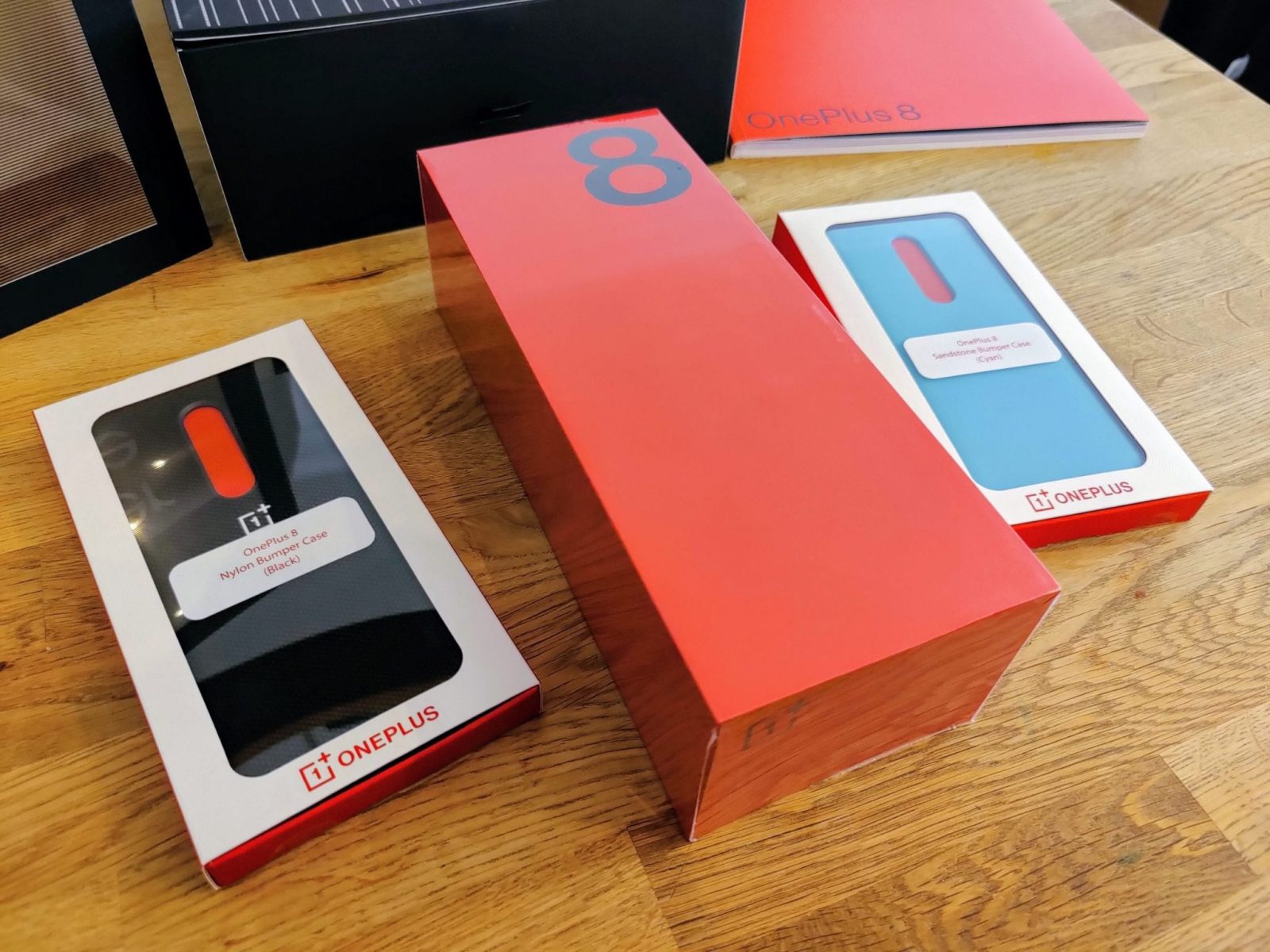



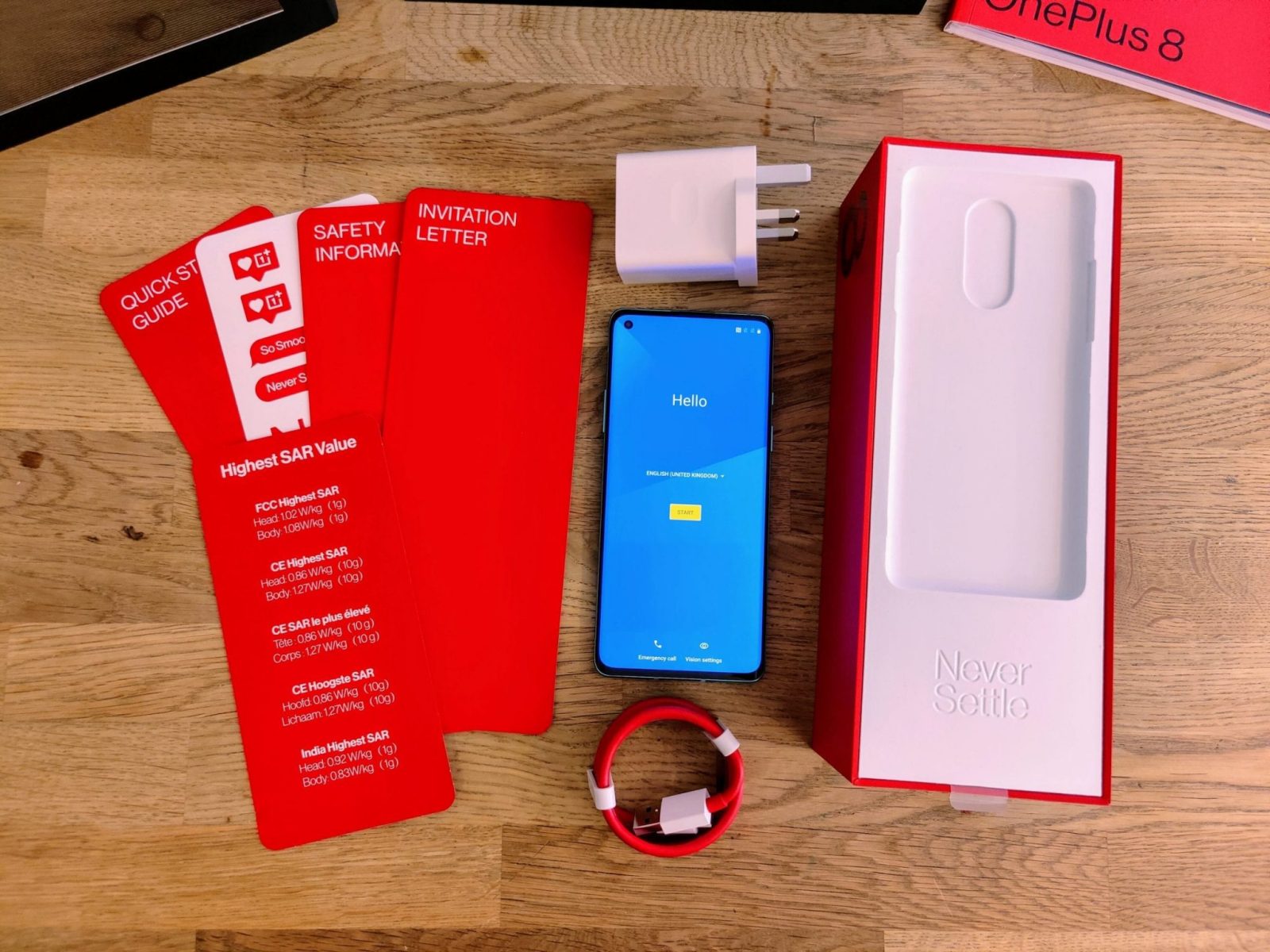

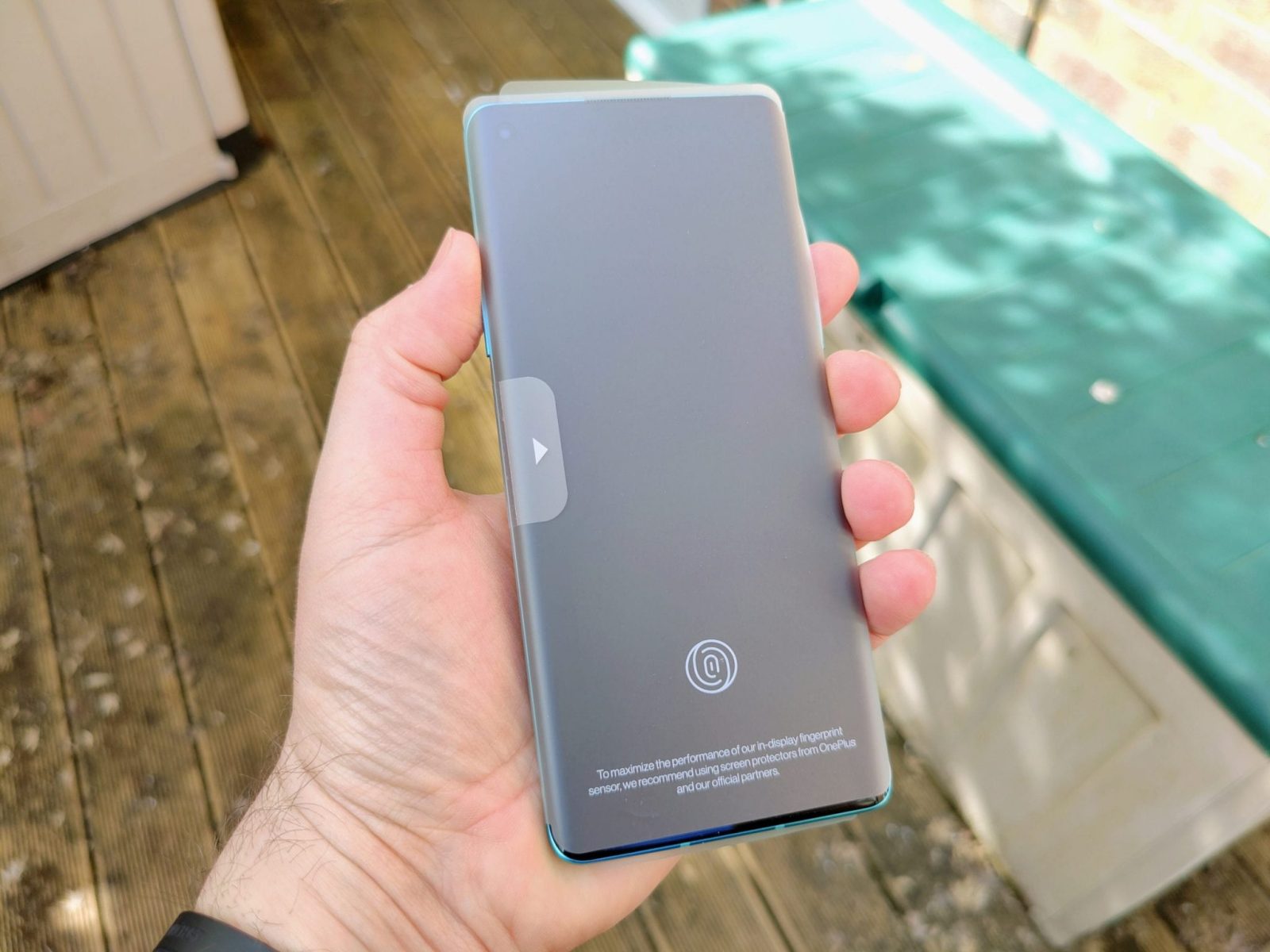
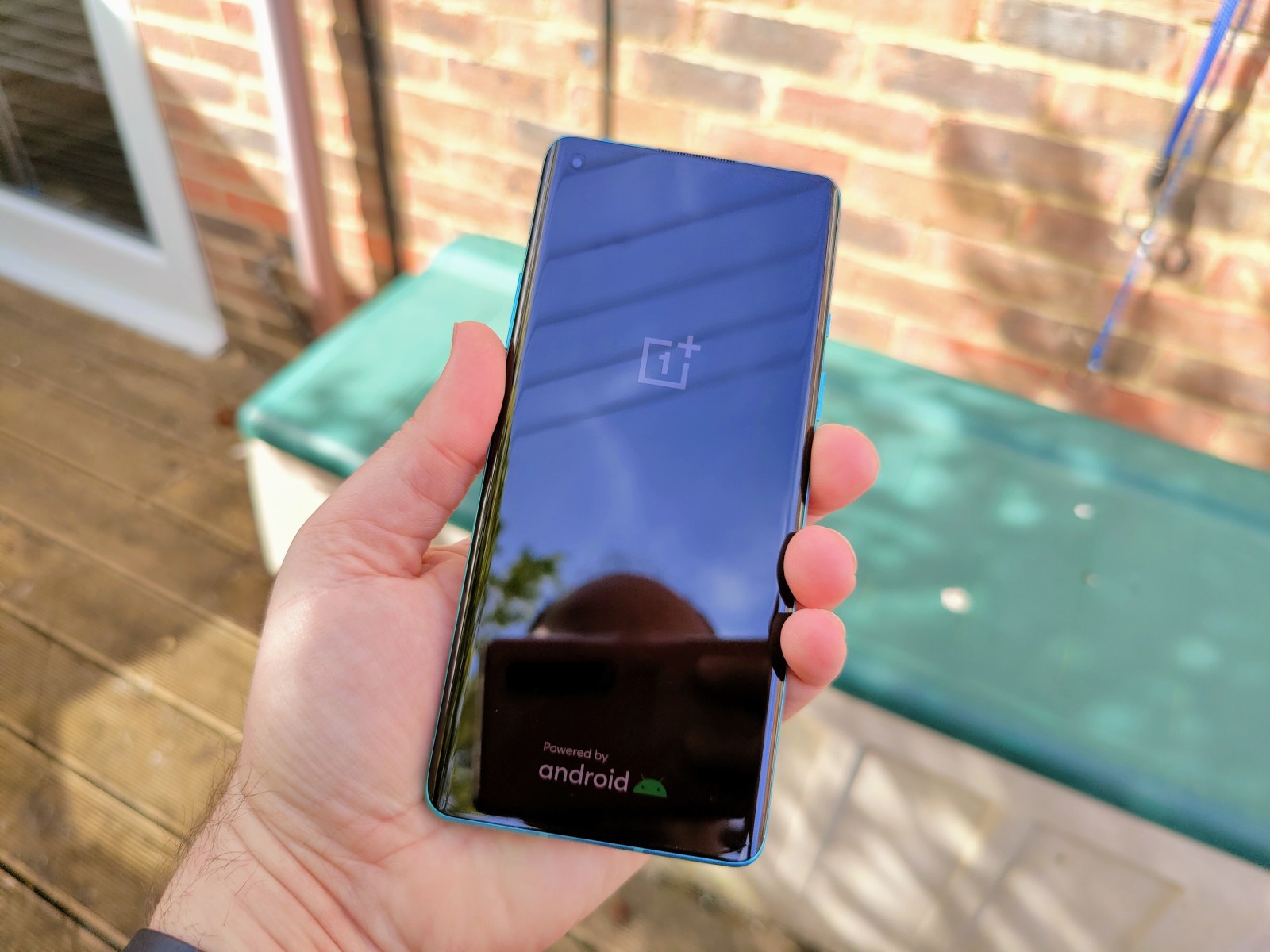
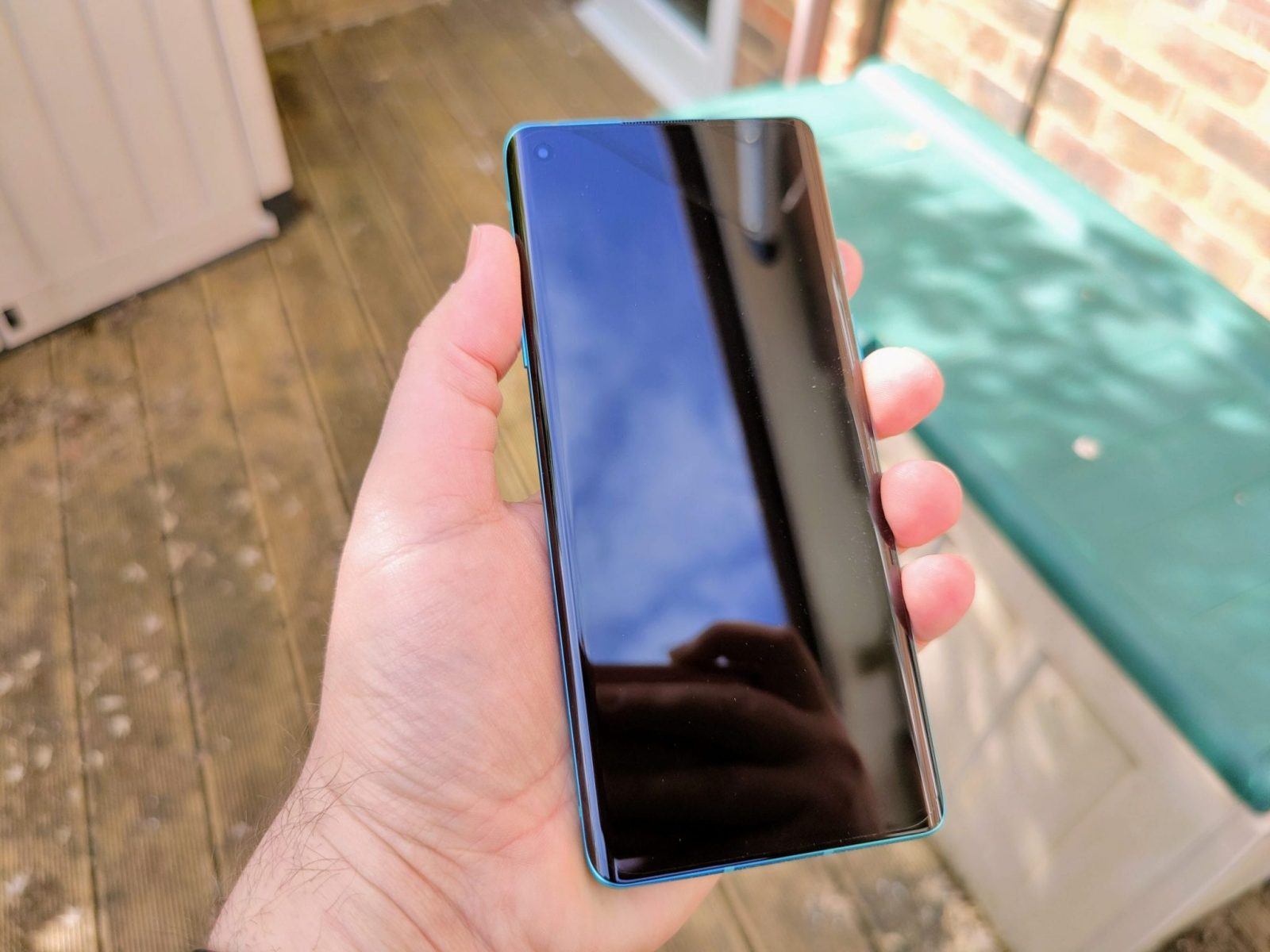

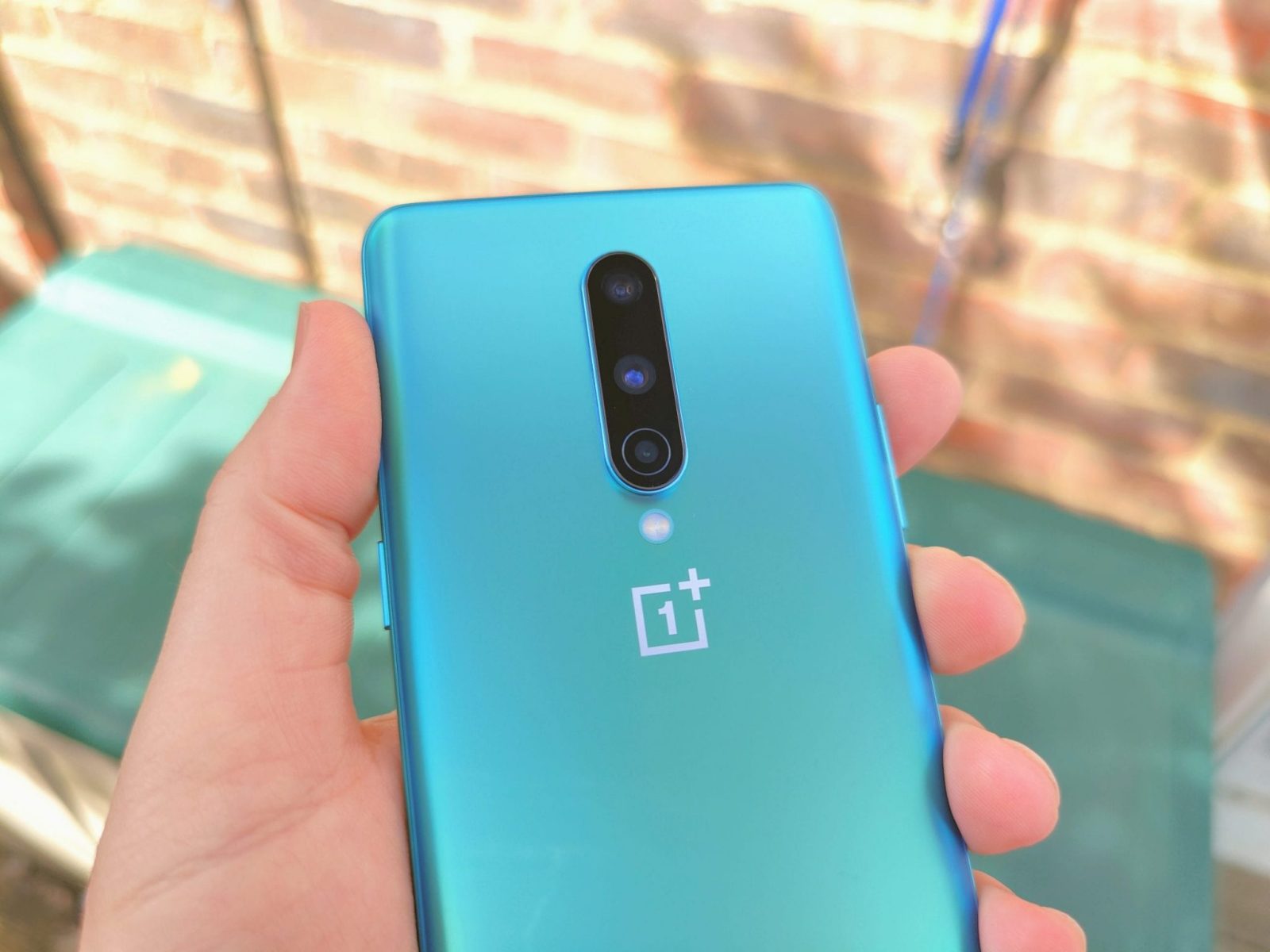















The OnePlus 8 measures 160.2×72.9x8mm and weighs in at 180g – pretty much the same dimensions as the OnePlus 7T. Given that was a fantastic phone for the money, it’s great to see that its successor has remained more affordable than some people feared.
The pricing starts at £599, which isn’t bad for a 5G handset with a very impressive set of specifications. It is available to buy in two colours in the UK. You can expect the other more flamboyant colours to be introduced later in the year, I’m sure.
The colour I received was Glacier Green (with a very nice fingerprint resisting matte finish), and the other choice on offer is Onyx Black (with a glossy finish). These are the same colour options as the OnePlus 8 Pro, in the UK at least.
In the video below you can find out a bit more about the OnePlus thinking on CMF (Colour, Materials and Finish).

Screen
The OnePlus 8 screen isn’t much smaller than the OnePlus 8’s 6.7-inch screen, measuring 6.5-inches instead. It has curved edges too, giving it a very premium feel in the hand, and setting it apart from last year’s OnePlus 7 and 7T models.
It has a Full HD+ resolution, with HDR10 and a JNCD score of 0.4 – matching that of other flagship phones including the OnePlus 8, Oppo Find X2 and Huawei P40 Pro.
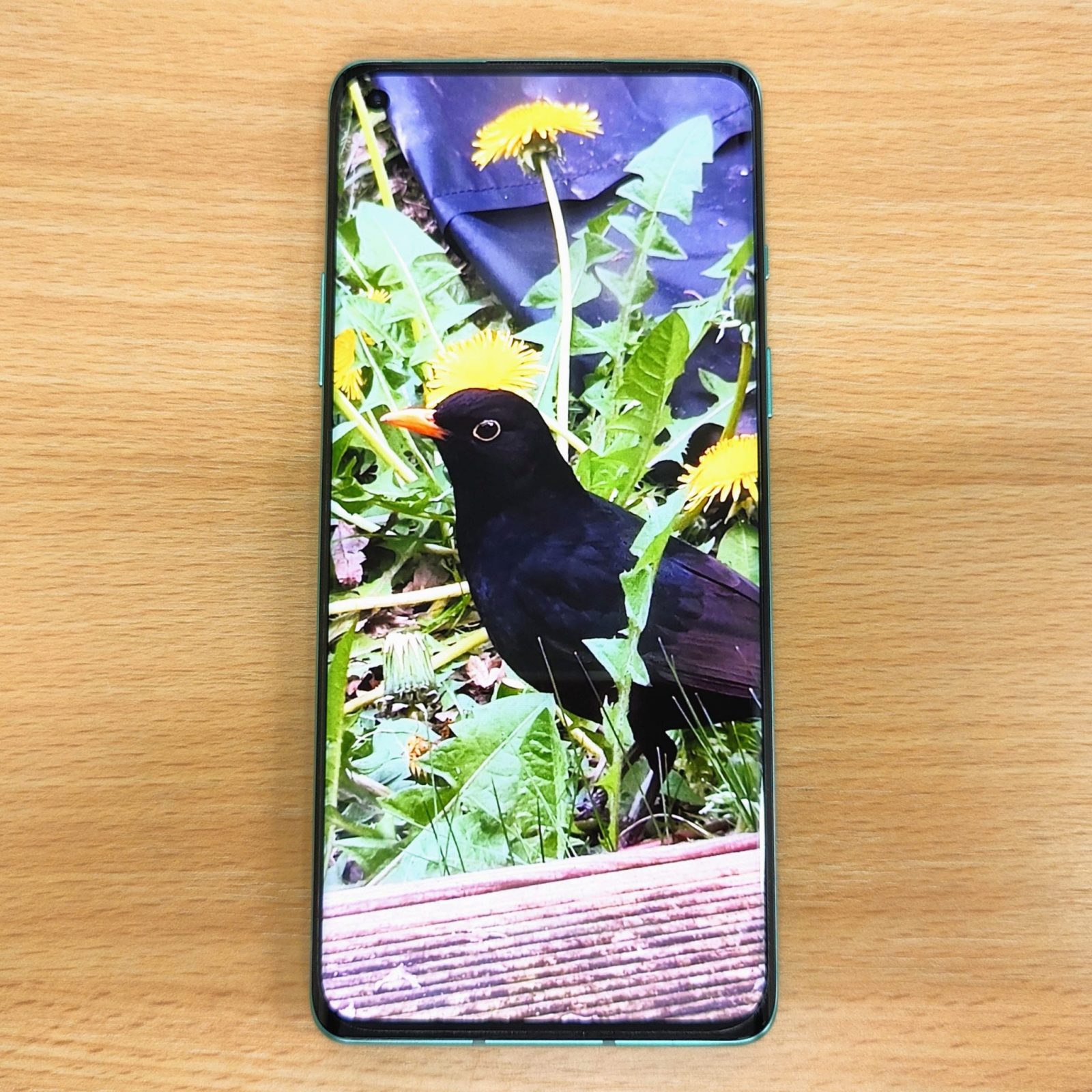
The screen refresh is 90Hz, rather than 120Hz on the flagship model. It’s still more than good enough in 2020.
There’s no tear drop notch now, as OnePlus has utilised the same punch-hole selfie camera as the OnePlus 8 Pro, with a 16-megapixel resolution camera inside.

The hole is very small, and positioned so as to be easily hidden by your hands when playing games, or out of your main vision when watching a film.
Along with this really impressive screen are two speakers, above the display and at the base of the phone. They’re pretty evenly balanced and loud.
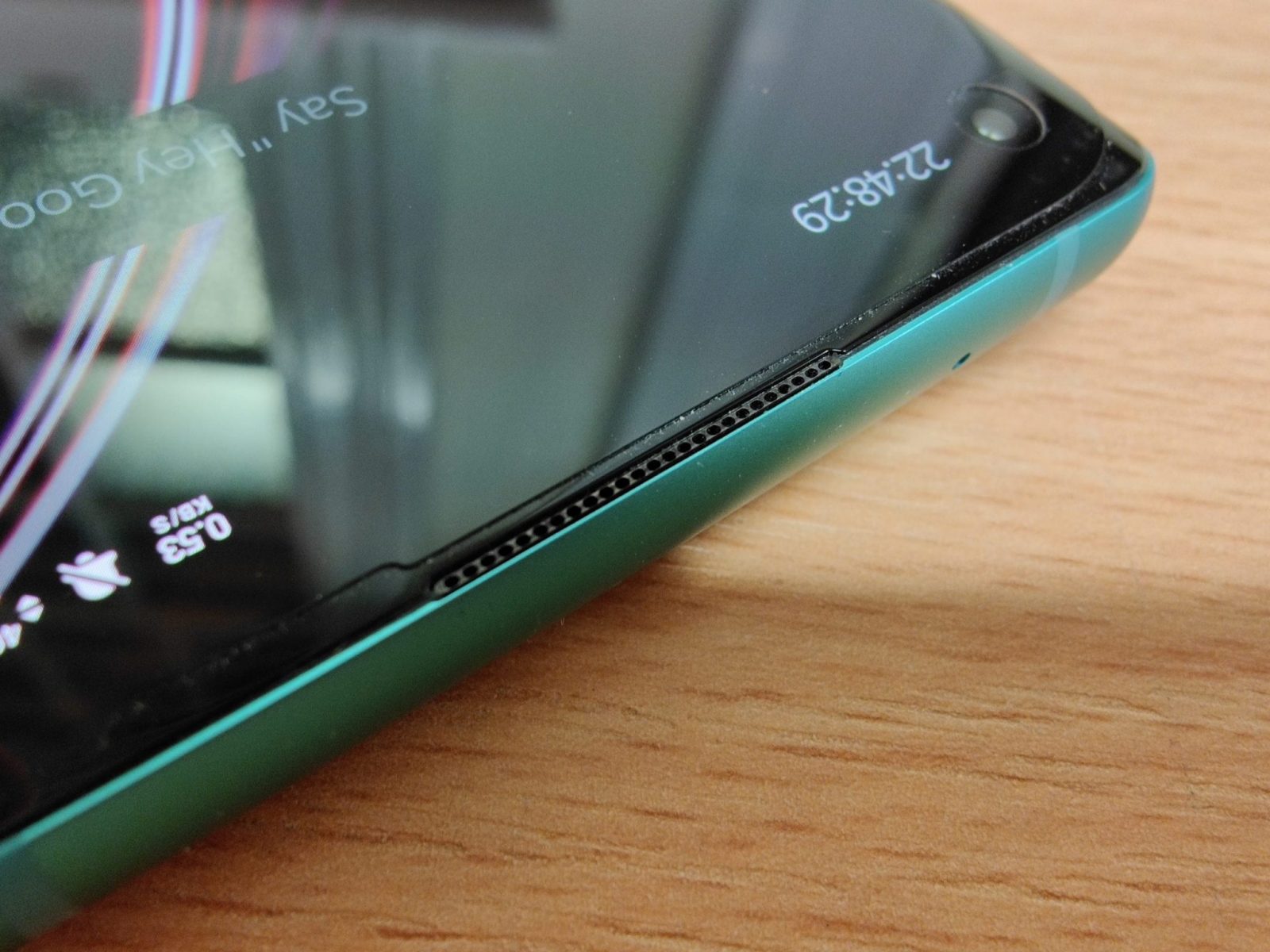
Camera
Oddly, the design of the cameras on the back has reverted to the original OnePlus 7 (and Pro) styling, making the circular layout a rather short lived affair.
It seems the rumours last year were correct after all, and I was convinced the circular look would have become the 2020 design language (I wonder if that will happen for the ‘T’ revision models in the autumn?).

Of course, the layout of the cameras is somewhat less important than the cameras themselves, and OnePlus has not pushed the boat out as far as it has with the Pro model.
The phone has the older Sony IMX586 48-megapixel primary camera as used in last year’s models, a 16-megapixel ultra-wide camera, and a 2-megapixel macro camera.
This keeps the zoom capability to just two times, with a digital zoom of 10x.
But, the OnePlus 7T wasn’t bad so is that really a big issue?
I’ve created a separate page for the OnePlus 8 Camera review, with a much bigger selection of photos and video.
If you’ve returned from there, you’ll hopefully conclude that even without the ability to do an extensive camera test, there’s not much wrong with the camera.
Google Play onboard
Given the woes of a certain handset maker currently embroiled in an ongoing battle with the USA, forcing it to release new phones without support for Google apps, all new Android phones with access to Google Mobile Services are now making sure to tell you.
This is a Google thing, rather than individual manufacturers opting to gloat.
Stickers will be put on all phone boxes sold from now on, along with a boot screen that will also let you know that your handset will run Google applications, including support for Google Pay and Google notifications.
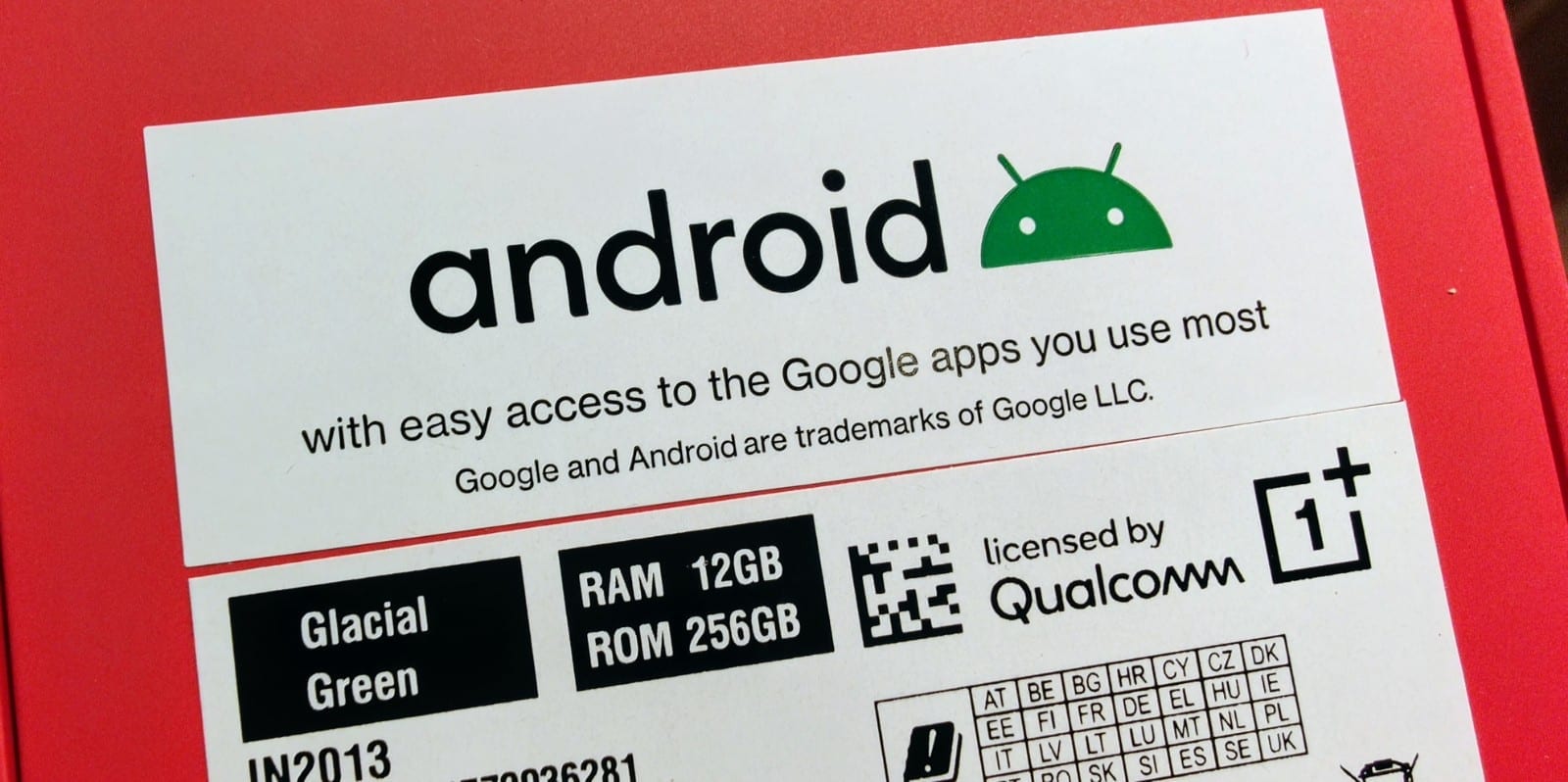
Stellar Performance
With the latest Qualcomm Snapdragon 865 chipset, the phone may not have the flagship screen, nor the cameras from the OnePlus 8 Pro, but it still has the same level of performance.
Indeed, with a lower resolution display, the performance for gaming should actually be superior.
RAM inside the phone is LPDDR4 (the Pro has LPDDR5) and you can choose between 8GB or 12GB.
The 8GB model comes with 128GB of non-expandable storage, while the 12GB model has 256GB.
To keep everything going, there’s a 4,300mAh battery and Warp Charge 30T support – which gets you from 0% to 50% charge in 22 minutes.
There’s no IP-rating here, but I’ve been assured it is designed to cope with splashes and the odd bit of rain.
There’s no wireless charging support, another feature reserved for the Pro model, but it may well appear in the 8T? It isn’t a feature that everyone wants or needs, but like the cameras, if you want more then OnePlus is offering it a price.

5Geeeeee-whiz!
Both of the OnePlus 8 series models this year have 5G as standard, which was as expected now the rollout of 5G is starting to gather momentum (OnePlus did also say as much shortly before the launch).
Due to the lockdown, I’ve been unable to travel far to test out the phone but my first impressions of this phone near home are, well, wowee.
Both 4G and 5G performance has been nothing short of incredible, and I’ve had faster 5G speeds in the same location than any other 5G enabled handsets I’ve tested – including the Oppo Find X2 Pro.


There is one thing to note regarding the dual-SIM connectivity on the OnePlus 8 though. You can have two SIMs in the phone, and both happily work on 2G to 4G concurrently, but if you want to use 5G then you’re currently limited to just one SIM in use at a time.
You can opt to disable 5G, but it’s rather unlikely that you’d want to do this. A software update is mentioned by the phone itself, but in my time with the device I was yet to receive the update.
I can confirm the following applies for users on EE, Three and Vodafone (I do not have an O2 SIM to try):
All three support 5G access, but only EE was seen and tested working with VoLTE (4G Calling) and VoWiFi (Wi-Fi Calling). Indeed, the option for Wi-Fi calling was disabled on all but EE.
VoLTE on Three should also work, given Three will be selling the OnePlus 8, but I was unable to see it during my testing.

Other Features
A cool feature on this phone, which some OxygenOS beta testers may have already dabbled with, is the Dual-channel network acceleration. This combines both Wi-Fi and mobile data to offer faster data transmission, but only on supported applications – such as Google Docs, Drive, Gmail, Play Store and Microsoft Teams.
Once activated, you don’t need to do anything and the application will automatically enable the feature when it can (you must be connected to Wi-Fi as the primary connection). It can make a big difference to download times, but is obviously only good for large, or unlimited, data allowances.
For the naysayers that ask why anyone needs all the speed of 5G on a phone, I can say that one reason is that – data allowance permitting – you can share that connectivity with other devices using the personal hotspot.
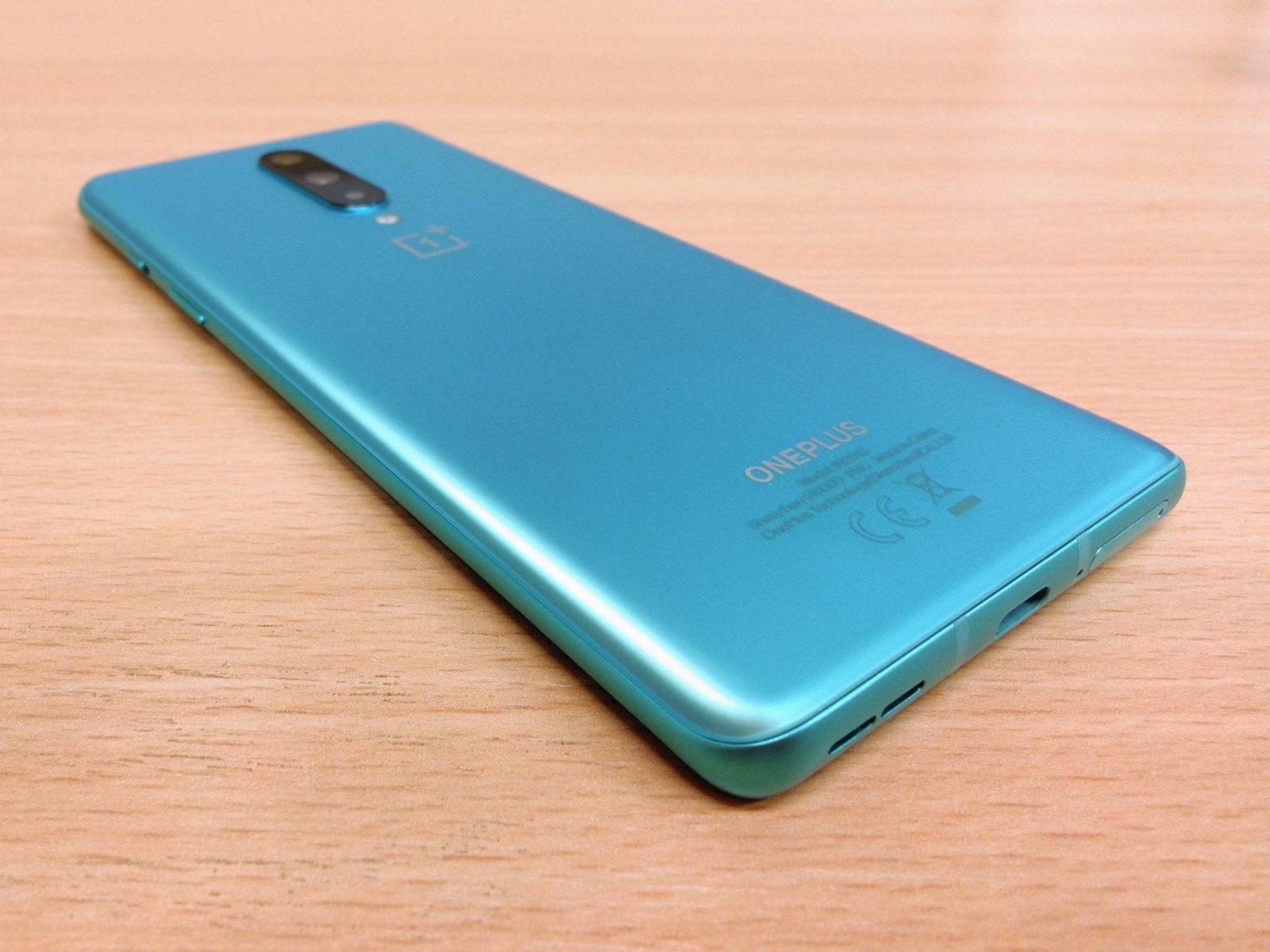
The OnePlus 8 comes with Wi-Fi 6 support that can be activated so you won’t lose out on speed if you’re lucky enough to get faster speeds than Wi-Fi 5 could share. Even if you’re still to upgrade your home router, it’s good to have a level of future proofing.
Battery life proved outstanding thanks to the massive increase on the OnePlus 7, and 4,300mAh is impressive for any phone. With the fast charging comes another good feature, even if OnePlus isn’t first to offer it.
The phone can now learn your usage habits and reduce the speed of charging when it predicts you’ve gone to sleep until the morning. Why rush to charge and then keep topping it up to keep it at 100% when it can wait to charge instead?
Another new feature is native support for Alexa if you’d rather use this over Google Assistant, while OnePlus is also throwing in three months of 100GB cloud storage with Google One.

Dual-channel network acceleration (combines Wi-Fi and Mobile Data on selected applications) 
Dual-channel network acceleration (combines Wi-Fi and Mobile Data on selected applications) 
Dual-channel download acceleration in action on the Google Play store 
Tethering a super-fast 5G connection; ideal if you have unlimited 5G data 
And with Wi-Fi 6 support, you can be sure the Wi-Fi connection won’t become a bottleneck 
Optimised charging learns your usage and will slow charge when possible (such as when you’re sleeping) to reduce battery damage 
The phone also learns your usage and can better save the battery when the phone is in standby 
Dual SIM settings: Some networks won’t support all features, but will hopefully be fixed in future updates 
OnePlus states that a future update might address the current 5G issue with two SIM cards
Oxygen OS has a load of great features, which any OnePlus user will already be very familiar with. Those who are new to it will be in for quite a treat in terms of customisability and speed.
The online community also helps add new features, of which one new feature coming soon will be the addition of an always-on display. The current standby screen doesn’t remain on at all times, and many users have asked for it – and the company has listened and acted.
Final thoughts
This is one of the faster reviews I’ve written, so I was a little concerned that I wouldn’t be able to test every aspect of the phone – but with a great deal of familiarity with earlier OnePlus handsets, including the OnePlus 7T, I think I have managed to cover off everything that is important.

If you have any specific questions, please put them in the comments below and I’ll answer them separately.
Let’s get this straight: the phone has a fantastic screen and great audio. Even though rivals are now offering as high as 144Hz refresh rates, 90Hz is still as buttery-smooth to look at as it was when OnePlus introduced it last year.
The cameras won’t likely get a top DxOMark rating when the results are published, but it doesn’t mean the camera is a disappointment. If you’re not after the most flexible camera options, the OnePlus 8 is going to be just fine and save you a fair bit over the more expensive model.
While you’re limited in your ability to zoom, for the vast majority of time away from the primary camera you’ll likely be wanting to take wide-angle shots more than trying to see if there’s anyone walking around on the moon.
Sony’s IMX586 sensor might be getting on a bit, but it’s still an excellent offering, so much so that it’s still the choice of the wide-angle camera on both the OnePlus 8 and Oppo Find X2 Pro.
The battery bump is also a massively welcome upgrade, and some might actually consider this the most significant upgrade.
OnePlus is trying to keep the standard and Pro models separate to appeal to different buyers, which continues on from what OnePlus started last year.

In order not to disappoint the OnePlus community, the OnePlus 7 and 7T have progressed along a fairly straight line in terms of pricing, while the Pro line allows the company to introduce more flagship features sooner and compete with the more expensive rivals.
As last year also showed, by the time of the ‘T’ revision in the autumn, many Pro features filtered down to the standard model.
This may well happen again this year too, so you might see the cameras upgraded or the screen gaining 120Hz. Perhaps there will be an IP-rating, or wireless charging support.
But if you keep waiting, you’ll never get anything at all – and as it stands the OnePlus 8 offers a lot of bang for your buck and will serve as an ideal upgrade, or alternatively a great first entry into the OnePlus ecosystem.
Specifications
| Size & weight | 160.2 x 72.9 x 8mm / 180g |
| Chipset | Qualcomm Snapdragon 865 + X55 5G Modem |
| RAM | 8 or 12GB LPDDR4 |
| Storage | 128 or 256GB UFS 3.0 (non expandable) |
| Screen | 6.55 inch AMOLED, 1080×2400 pixels (20:9) HDR10+, 90Hz, JNCD 0.4 Integrated fingerprint sensor & face unlock |
| Audio | Dual-stereo sound |
| Camera (rear) | 48-megapixel primary (Sony IMX586) 16-megapixel wide-angle (116 degree FoV) 2-megapixel macro (Camera offers 2x zoom and 10x digital zoom) 4K video recording at 30 and 60fps |
| Camera (front) | 16-megapixel |
| Battery | 4,300mAh with 30W charging |
| Connectivity | 2G-5G, NSA and SA + Wi-Fi 6 and BT 5.0 Dual SIM |
| OS | Android 10 with OxygenOS 10 |
Pricing
The OnePlus 8 is available in two colours – Glacial Green and Onyx Black – and in two configurations.
- OnePlus 8 8GB RAM/128GB storage: £599
- OnePlus 8 12GB RAM/256GB storage: £699
Straight after the launch, OnePlus is opening a virtual pop-up store where early adopters can order before the official on-sale date and receive bonus goodies – and after that, you’ll be able to buy the phones from 9am, April 21st at John Lewis and Amazon.
John Lewis will include Bullets Wireless 2 headphones while stocks last.
If you’d rather sign up on a contract, the OnePlus 8 will also be sold by Three.






